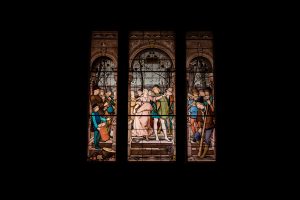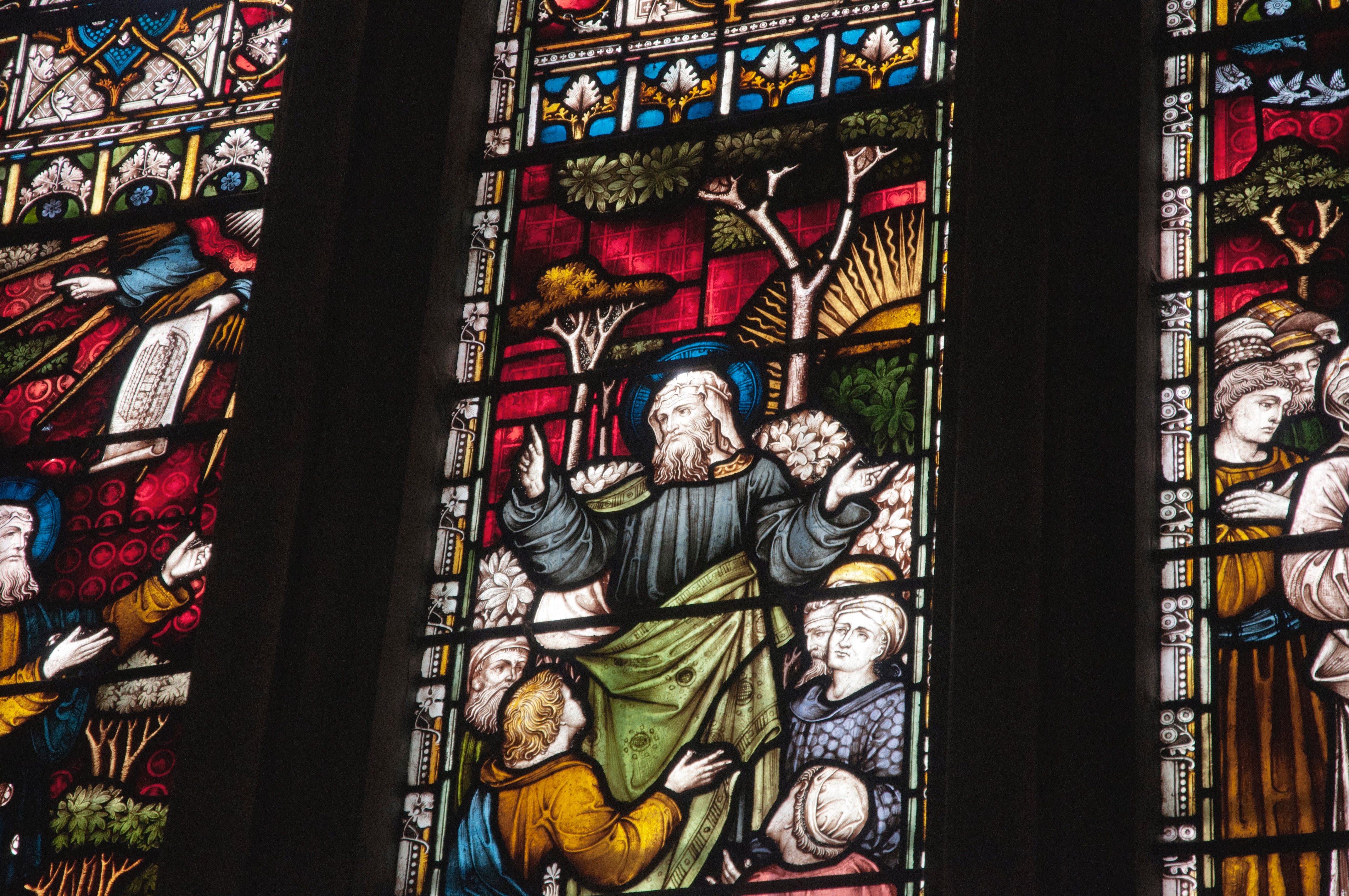Because of technological advances during the Middle Ages, glass, and stained glass in particular, became a major art form and an important means of decorating churches. Just like with other arts such as paintings, sculptures and mosaics, most of the themes represented by stained-glass art focused on religious figures and stories from the Bible. However, stained glass was different from other arts in that it was replacing walls instead of simply being used as a part of walls.
When architects used stained glass instead of walls, the light that  passed through the glass lit up the interiors of churches and created colourful impressions and lighting effects inside the buildings. The passage of light through walls was a symbol of Christianity passing into the hearts of people and becoming a major religion in Europe. Many visitors to churches do not realise how deliberate and symbolic the natural lighting effects are.
passed through the glass lit up the interiors of churches and created colourful impressions and lighting effects inside the buildings. The passage of light through walls was a symbol of Christianity passing into the hearts of people and becoming a major religion in Europe. Many visitors to churches do not realise how deliberate and symbolic the natural lighting effects are.
Things started changing at the beginning of the 15th century when scientists began to question the role of church and religion in society. Many scholars and artists started to shift focus from religion to human achievement, exploring the human body and the world around them.

